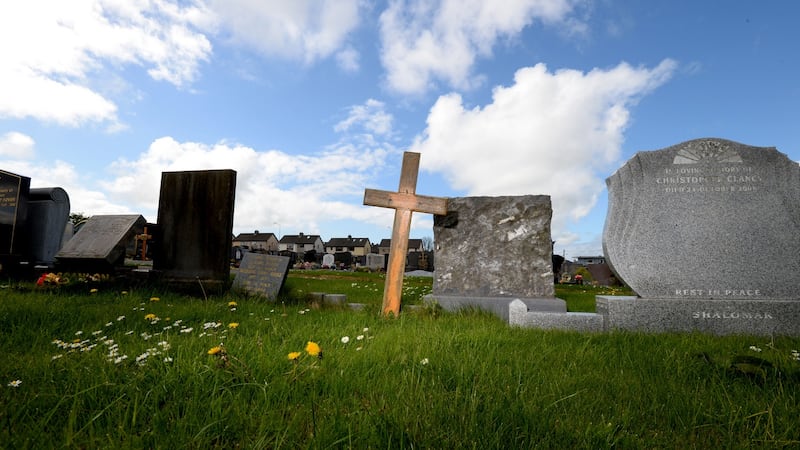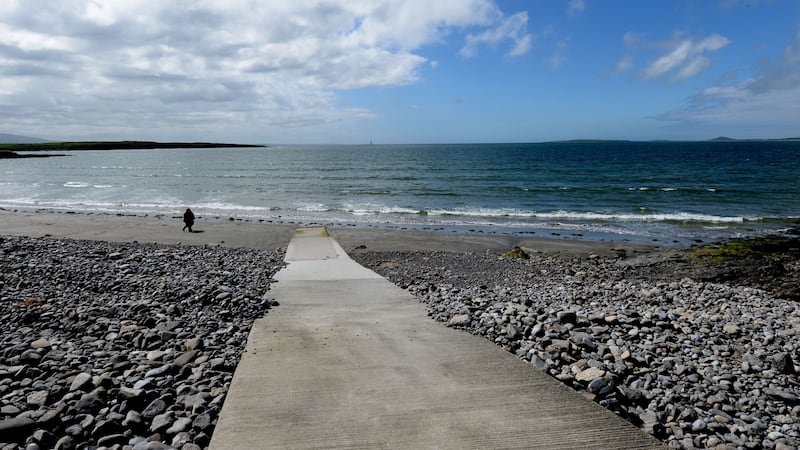Next Wednesday, June 16th, it will be 12 years since an unidentified male body was found on Rosses Point beach in Co Sligo. The dead man, believed to be in his 60s, was wearing a pair of purple striped swimming trunks, with his underpants over the trunks. A navy T-shirt was tucked into them. It was peculiar attire for a swim.
In the following days, many more peculiar things emerged about this dead man, chiefly that he had purposely concealed his true identity. He had given his name as Peter Bergmann when checking into the Sligo City Hotel on June 12th, speaking with what staff later recalled as either a German or Austrian accent.
The Austrian address he gave turned out to be false; it did not exist. When CCTV footage from the hotel was later reviewed by the police, they discovered Peter Bergmann had left the hotel 13 times with a full purple plastic bag. Each time he returned, he was carrying nothing. It was evident he had disposed of the contents of these bags somewhere around the town, but nothing was captured on camera.
In time, it was established this man had travelled to Sligo town by bus from Derry. Where or how he entered Ireland prior to his arrival in the North was never discovered. After arriving in Sligo, he engaged in many mysterious activities; mysterious because they were tantalising leads that ultimately led nowhere, except to indicate that this man had come to Sligo with the specific purpose of vanishing.

There were the 10 stamps he bought at the local post office, for letters or a package he was not seen posting. There was a reconnaissance trip by taxi to Rosses Point beach two days before he was found dead there. Although he was captured on CCTV on arrival in Sligo with two bags, neither of them, nor their contents, were ever found after his death.
The mysteries added up. It was originally assumed he died from drowning, but an autopsy revealed both a terminal illness and that he had had a heart attack on the beach. How could someone simultaneously plan to eradicate all traces of their identity, while also dying in what seemed to be an unplanned way?
For months after his death, the man remained in a Sligo morgue, while gardaí waited for family or friends to come forward to claim his body. Pictures of him as captured on CCTV were circulated throughout Europe and beyond. Nothing happened. In September of 2009, this unknown man was eventually interred in Sligo cemetery in a plot purchased by the Health Service Executive. His grave is still unmarked.

Two years ago, I wrote The Unsolved Mystery of Peter Bergmann for The Irish Times. I also made a three-part Irish Times narrative podcast on the story, called Atlantic. It involved interviews with many people who had had some tangential contact with this mysterious man: the detectives who worked on the case, the taxi driver who brought him to Rosses Point, the people who saw him on the beach, the man who discovered his body, the doctor who did the autoposy, and the man who buried him.
After the story and podcast series went live, I waited in hope for some lead to emerge that would help the Sligo detectives solve the case. It seemed absolutely astonishing to me that someone could vanish so completely in 2009; a someone who had a face that was clearly visible in the CCTV footage. Had nobody missed this distinctive tall, thin man in his 60s, who wore glasses, had a terminal illness, and who came to Ireland from some other country, apparently to deliberately vanish?
In the intervening two years, I have received countless emails from people all over the world who read the story and listened to the podcast, and who had ideas and theories as to who Peter Bergmann might really be. No detail was too small to be ignored, including the possible origin of the hotel soap found in one of his pockets.
The email I received the most frequently, and still do, is about DNA. Was it not possible to find out who he was via a DNA test? I regretted not including in my story the fact that I had already put this same obvious question back in 2019 to the Sligo detectives. They had replied:
“We don’t send DNA to Ancestry or other sites. While it might advance an area where Peter night have come from, it doesn’t advance his identification.”
The Sligo detectives do retain his DNA, so if that policy ever changes, more information may emerge that way.
An Austrian newspaper, and then a German one, got in contact and subsequently carried extensive stories of their own, with appeals for information. None was forthcoming.
Someone in Germany with a degree in forensic art and facial identification sent images he had created, with the hope this might jog memories. It didn’t. A famous forensic genealogist in California, who works with police agencies internationally to solve the identities of unknown dead people got in touch. Nothing has come of that so far.
The fact is, 12 years after the discovery of his body on a beach at Rosses Point on June 16th, we still do not know who the man calling himself Peter Bergmann was, or where he came from. But someone out there must know who he is. Someone always knows something.
Read the The Unsolved Mystery of Peter Bergmann here
Listen to Atlantic, Rosita Boland's Irish Times podcast here
Who was Peter Bergmann? To share information about this case, please email rboland@irishtimes.com










